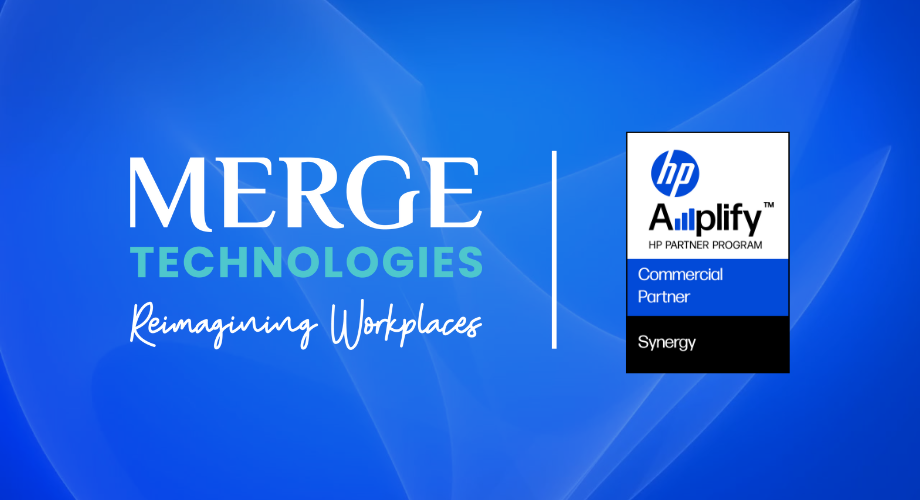
Given the unpredictable nature of the pandemic, safety in the workplace has become even more critical to maintain employee wellness, business growth and productivity. Whether it’s regular sanitisation, zero-touch interaction or social distancing, there are many factors to consider when managing the safety of a workplace. It can be difficult however, to maintain a safe workplace in what is the new normal while still delivering a positive experience to employees.
The hybrid model of working was born out of necessity to reduce in-office numbers required to achieve social distancing and keep people off public transport, which at times runs at a significantly reduced seating capacity. Not to mention lockdowns where work from home is mandatory for all staff.
According to Frost & Sullivan, video conferencing usage has grown by over 350% compared to pre‑pandemic levels.
Under the new remote and in-office working model, which is undoubtedly here to stay, a collaborative and productive environment regardless of where employees are, has never been more important. Physical office spaces are transforming into collaboration hubs, where employees go to exchange ideas, complete group tasks, and hopefully spark up a water-cooler type conversation that just isn’t possible when they’re working from home. And given not everyone can be in the office at the one-time to participate, remote connections are required to bring teams together to encourage innovation and creativity. To support this new way of working, the right technology needs to be in place and video conferencing and collaboration systems are an integral part of the solution.
The Experience of Your Remote Employees
.png)
The amount of people working remotely full-time has tripled from the start of the pandemic, from 4% to 12%.
Employees now work an average of 2 days at home and 3 days in the office, with Mondays and Fridays being the most popular days to work remotely. For employees working remotely, it is critical that their video conference experience is seamless and natural, making them feel as if they are right there in the room.
At the start of the pandemic, organisations rapidly deployed simple webcams and headsets for their employees to take home to ensure they remained connected and engaged. Since then, manufacturers have developed numerous pieces of hardware to support remote working. For example, the Poly Studio P15, and the DTEN-ME, which are purpose-built devices designed to enhance the home office video conferencing and collaboration experience, are gaining in popularity. For those who don’t have a dedicated workspace at home, there are some great products to help provide acoustic privacy such as these products from Woven Image.
The In-office Experience

With no reduction in staff, but a reduction in office seating capacity, a new challenge has been presented to seamlessly manage workspaces. This includes not just hot desk booking and allocation, but also cleaning schedules and all-important contact tracing in the case of a COVID-19 outbreak.
Many workspace management applications have evolved and enable businesses to better manage and monitor the usage of all workspaces including hot desks, collaboration spaces, conference rooms and other facilities. This includes the ability for employees to book spaces well in advance of their office visit, ensures social distancing and workspace capacity limits are adhered to, and automates cleaning schedules. This has the added benefit of recording staff movement for retrospective contact tracing and providing peace of mind to employees knowing that workspaces are being cleaned regularly.
In fact, 80% of employees believe visible regular cleaning is important in the workplace.
In the conference room some platforms, for example Zoom Rooms and Neat, will count and record the number of people in the room. If a capacity limit has been set for the room, a scheduling display mounted outside will notify staff of that capacity, and if that capacity has already been reached. While in the room, in order to deliver a natural and productive experience, users should be able to seamlessly engage and interact with their remote colleagues. This includes providing intelligible audio, which you can read more about here and careful selection of AV components to cater for the room’s use cases.
Upgrading Your Workplace Technology

One of the keys to future proofing your business is investing in and upgrading your workplace technology to cater for the new way of working. Whether that’s digital signage to efficiently deliver messages and alerts to your workforce, voice activated technology to reduce physical interaction or workspace management applications, the technology must be intuitive and easy to use.
It is often difficult to visualise what the future proof workplace looks like and how users will interact with it. To overcome this, at Merge we employ virtual reality technology which allows you to see and interact with the workspaces and aids in the design process to produce better outcomes. You can watch this video for more information:
Investing in Workplace Technology
Video conferencing is one of the top priorities for IT Departments. The investment in collaborative meeting rooms is essential to support the workplace of the future.

By 2022, 88% of businesses will deploy video conferencing across their organisation to support new work styles. This will allow businesses to continue supporting their employees through hybrid work models, and in turn, supporting highly collaborative physical offices.
With unforeseeable lockdowns and changing restrictions not going away any time soon, many workplaces are constantly having to adapt and change their operations. Don’t get left behind, future proof your workplace and boost employee happiness by reaching out to the experts today.



